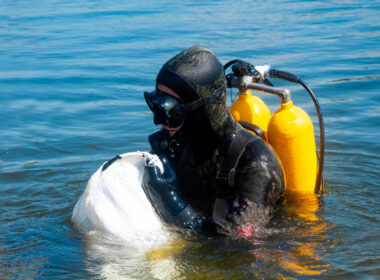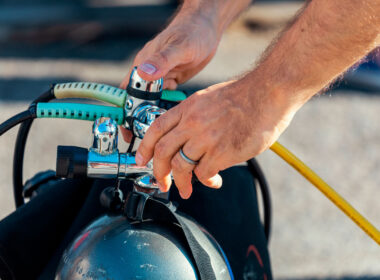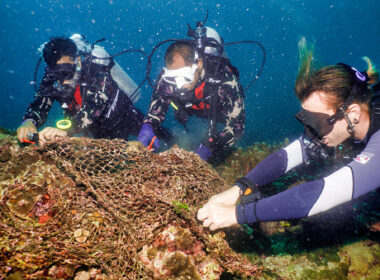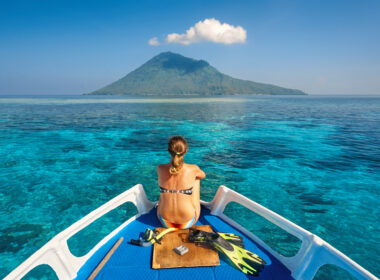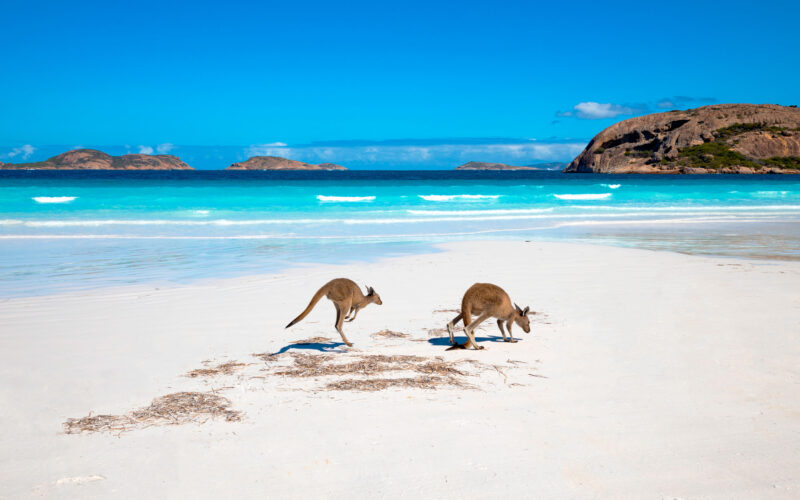Australia is home to some of the world’s most stunning dive sites and offers a variety of underwater experiences for both scuba divers and freedivers. From colorful coral reefs to shipwrecks and encounters with unique marine life, diving Australia’s waters truly is a diver’s paradise.
Australia’s stunning dive sites are an adventure of a lifetime, but when traveling far from home, it’s essential to be prepared for the unexpected. Ensure you’re covered for any emergency, including repatriation and evacuation, with our comprehensive dive and travel insurance. Click here to secure your protection and dive worry-free in Australia’s incredible waters!
Diving Australia with Scuba Gear
Scuba diving is a popular activity in Australia, with some of the most famous dive sites located along the Great Barrier Reef. The Great Barrier Reef is the largest coral reef system in the world and stretches over 2,300 kilometers along the east coast of Australia. Divers can explore the reef’s stunning coral formations, encounter a variety of tropical fish species, and even come face-to-face with larger marine creatures like sharks, rays, and turtles.
Other popular dive sites in Australia include the Ningaloo Reef on the West coast, which is home to the largest fish in the world, the whale shark. Another favorite is the SS Yongala wreck off the coast of Queensland, offering a unique opportunity to explore a sunken ship and the marine life that has made it their home.
Diving Australia as a Freediver
Freediving is also gaining popularity in Australia. Its pristine coastline offers year-round freediving opportunities in crystal-clear waters. With diverse marine life, stunning landscapes, and a strong commitment to conservation, it’s an ideal destination for both novice and experienced freedivers. The country’s safety measures and excellent training facilities make it a top choice for underwater adventurers.
One popular spot for freediving is the crystal-clear waters of the Blue Hole in the Whitsunday Islands. This natural underwater sinkhole is home to a variety of marine life, including sea turtles and reef sharks. The shallow waters make it a great spot for beginners to try their hand at freediving.
Another popular freediving destination in Australia is the waters around Rottnest Island in Western Australia. Here, divers can encounter sea lions and explore the unique underwater landscapes created by limestone formations.
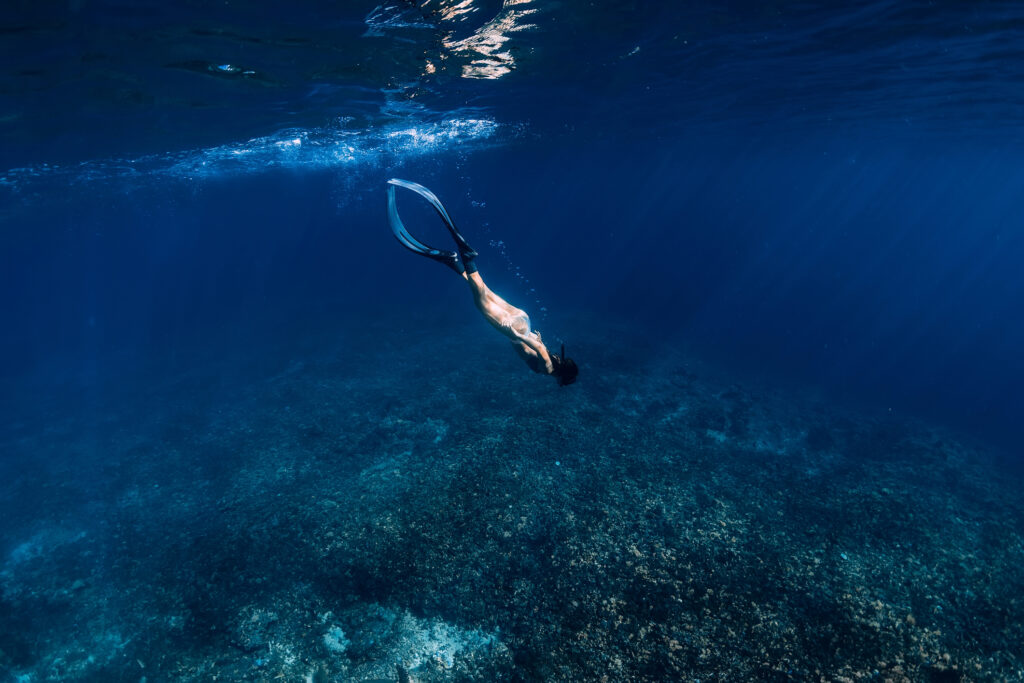
Tips for Diving in Australia
When diving in Australia, it’s important to be mindful of marine life and the environment. Here are a few tips to help ensure a safe and enjoyable diving experience:
- Respect marine life: Australia is home to many unique and protected marine species. Be sure to avoid touching or disturbing any wildlife you encounter during your dive.
- Protect the reef: The Great Barrier Reef is an incredibly fragile ecosystem. To minimize your impact, be sure to use reef-friendly sunscreen and avoid touching or standing on the coral.
- Plan for the weather: Australia’s climate can vary greatly depending on where you are diving. Be sure to research the weather and water temperatures in your chosen location and pack accordingly.
- Choose a reputable dive operator: When booking a dive, be sure to choose a reputable operator with experienced guides and well-maintained equipment.
- Get Covered: Australia’s stunning dive sites are an adventure of a lifetime, but many of the top spots are far from land and make an emergency situation especially difficult to navigate. Ensure you’re covered for any emergency, including repatriation and evacuation, with our comprehensive dive and travel insurance.
Diving the Great Barrier Reef
The Great Barrier Reef is one of the world’s most iconic natural wonders, and is home to an incredible array of marine life. Located off the coast of Queensland, Australia, this vast coral reef system stretches over 2,300 kilometers and is home to thousands of different species of fish, turtles, sharks, rays, and more.
The Great Barrier Reef is a vast network of over 2,900 individual reefs, 900 islands, and thousands of different marine species. It spans over 344,400 square kilometers, making it the largest coral reef system in the world. The reef is divided into three main sections: the northern, central, and southern sections. Each section has its own unique features, marine life, and diving opportunities.
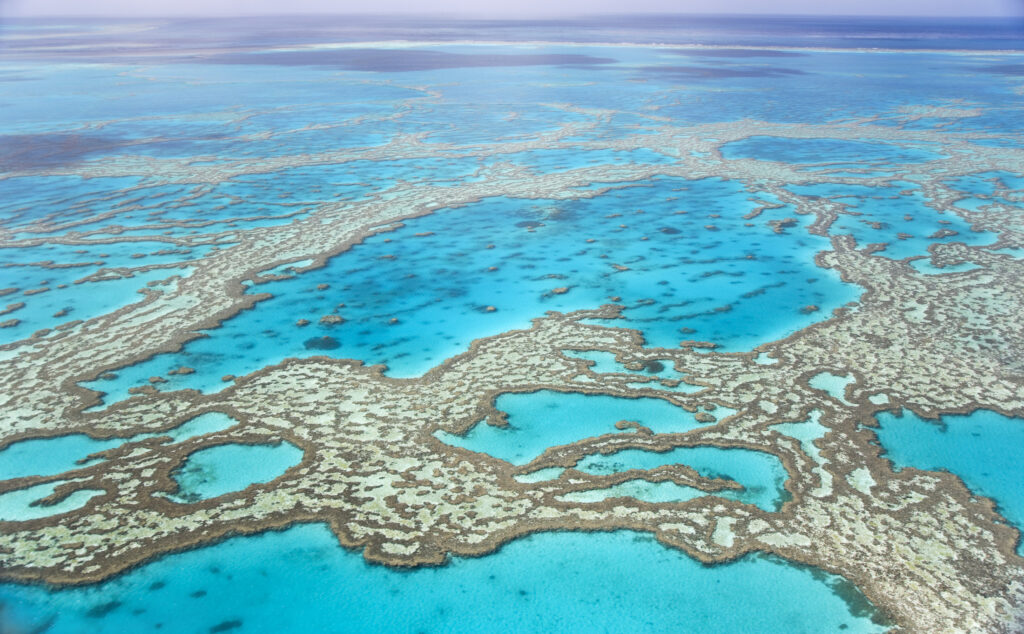
Marine Life of the Great Barrier Reef
The Great Barrier Reef is home to an incredible array of marine life. It’s estimated that there are over 1,500 species of fish, 400 species of coral, 4,000 species of mollusks, and 6 of the world’s 7 species of sea turtles. The reef is also home to several species of sharks, rays, and dolphins, as well as numerous species of whales during their migration season. Some of the most iconic species found on the reef include the green sea turtle, the clownfish ( made famous by the movie Finding Nemo), and the giant clam.
Snorkeling, Freediving and Scuba Diving on the Great Barrier Reef
Snorkeling, Freediving and Scuba Diving are the most popular ways to explore the Great Barrier Reef. The crystal-clear waters and incredible marine life make it a bucket list destination for many divers around the world. There are numerous dive operators and snorkeling tours available in the region, catering to all skill levels and interests. Some of the most popular dive sites include the Cod Hole, Osprey Reef, and the Ribbon Reefs. Snorkelers can explore shallower areas of the reef, where they can spot a variety of colorful fish and coral formations, while freedivers and scuba divers can reach the deeper depths and enjoy a more immersive experience.
Conservation of the Great Barrier Reef
The Great Barrier Reef is facing a range of threats, including climate change, pollution, and overfishing. As a result, the Australian government has implemented a range of conservation measures to protect the reef and its marine life. These measures include the Great Barrier Reef Marine Park, which is the world’s largest marine park, covering over 344,400 square kilometers. The park is home to strict regulations around fishing, boating, and tourism, aimed at minimizing the impact on the reef.
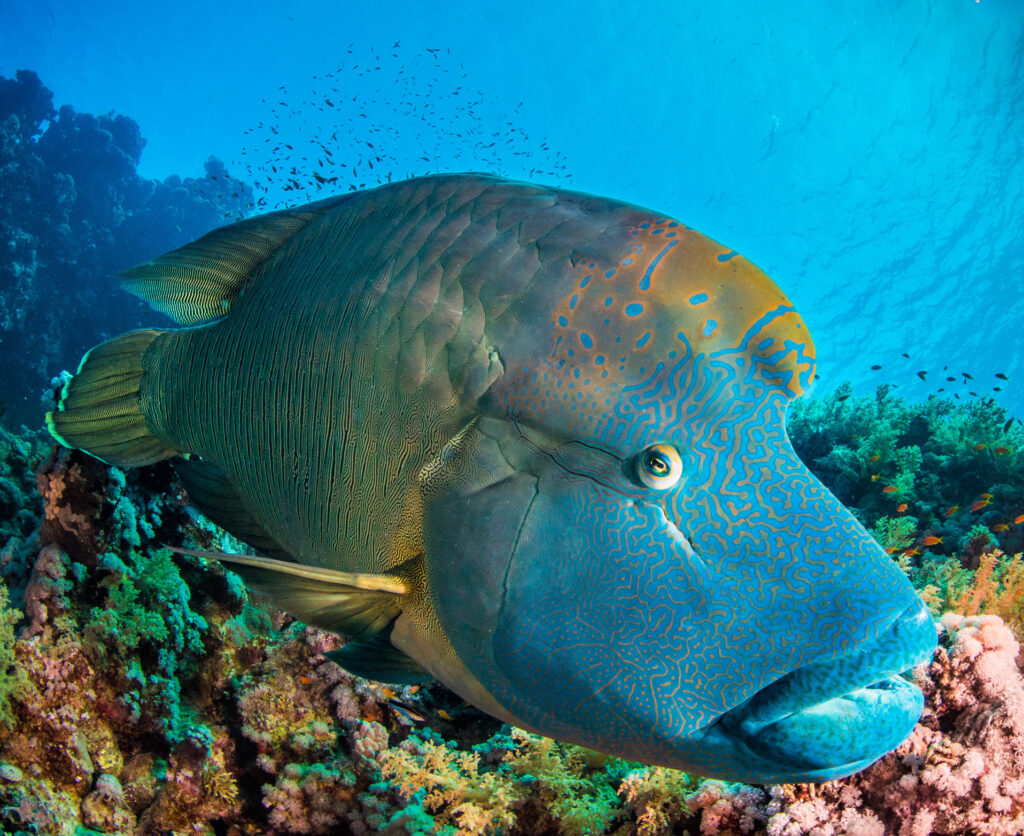
The Maori Wrasse an Indigenous Species of the Great Barrier Reef
The Great Barrier Reef is home to an incredible array of marine life, and there are many marine species that are unique to this particular ecosystem. One such species is the Maori Wrasse, also known as the Humphead Wrasse.
The Maori Wrasse is a large, colorful fish that can grow up to 2 meters in length and weigh over 180 kilograms. It has a distinctive hump on its forehead, which gives it its alternative name. The fish is native to the western Pacific Ocean, and the Great Barrier Reef is one of the few places where it can be seen in large numbers.
The Maori Wrasse is an important species for the health of the reef, as it plays a vital role in keeping the coral clean and healthy. It feeds on a variety of marine invertebrates, including sea urchins, crabs, and mollusks. By doing so, it helps to control the population of these animals and prevent them from overgrazing on the coral.
The Maori Wrasse is also a culturally significant species for many Indigenous communities in Australia. It is considered a sacred animal and is protected under the Great Barrier Reef Marine Park Authority’s Indigenous Reef Advisory Committee.
Visitors to the Great Barrier Reef can often spot Maori Wrasse while snorkeling or diving. While they are a popular sight for tourists, it’s important to remember that they are a vulnerable species and need to be protected. Tourists should avoid touching or feeding the fish and should always follow the guidelines set out by the Great Barrier Reef Marine Park Authority to ensure the ongoing conservation of this unique and important species.
Local Diving Slang
Like any subculture, the world of scuba diving has its own unique language and slang, and Australia is no exception. Here are some Australian diving slang terms to help you fit in with the locals:
- Barbie bottle: A small cylinder of compressed air used as a backup or emergency air supply.
- Blowies: Small jellyfish.
- Bug: A lobster.
- Cray: Short for crayfish or spiny lobster.
- Deco: Short for decompression stops.
- Fizzie: A tablet of Alka-Seltzer or other effervescent antacid used to relieve seasickness.
- Grey nurse: A common name for the sand tiger shark, a large shark that is known to be relatively docile and not aggressive towards humans.
- Mate: A common term of address between friends or acquaintances in Australia, and is often used by dive buddies.
- Scallops: Refers to ears, as divers need to equalize the pressure in their ears as they descend.
- Tinnie: A small aluminum boat, often used as a dive boat.
- Topside: Refers to the surface of the water, as opposed to being underwater.
- Togs: Swimwear, often used to refer to wetsuits or rash guards worn while diving.
- Skippy: A nickname for kangaroos, which are often seen around the coastline and on dive boats in Australia.
While some of these terms may be unfamiliar to non-Australians, they are commonly used among Australian divers and can add to the unique culture and experience of diving in Australia.
Dive Sites Off the Beaten Track
Australia is home to a wealth of dive sites, from the iconic Great Barrier Reef to the unique marine life found off the coast of Western Australia. While many of these dive sites are well-known and popular among divers, there are also some hidden gems that are lesser-known but equally as spectacular. Here are a few lesser-known dive sites in Australia that are worth exploring:
Rapid Bay Jetty, South Australia:
Located just south of Adelaide, the Rapid Bay Jetty is a popular spot for snorkelers and divers alike. The jetty is home to a diverse range of marine life, including seahorses, cuttlefish, and even the occasional great white shark. The water is clear and calm, making it a great spot for divers of all levels.
Montague Island, New South Wales:
Located off the coast of Narooma, New South Wales, Montague Island is a protected nature reserve and is home to a range of marine life, including seals, dolphins, and sharks. The island is accessible by boat, and there are several dive operators in the area that offer trips to the island.
Fish Rock Cave, New South Wales:
Fish Rock Cave is located off the coast of South West Rocks, New South Wales, and is a popular spot for advanced divers. The cave is home to a range of marine life, including grey nurse sharks, turtles, and rays. The dive requires a special permit and should only be attempted by experienced divers.
Ashmore Reef, Western Australia:
Located off the coast of Western Australia, Ashmore Reef is a remote and largely untouched dive site. The reef is home to a diverse range of marine life, including large schools of fish, manta rays, and sharks. The reef is only accessible by boat and requires a permit to dive.
Rowley Shoals, Western Australia:
Located off the coast of Broome, Western Australia, the Rowley Shoals is a chain of three atolls that are home to an incredible array of marine life. The waters around the shoals are crystal clear, making it a great spot for divers and snorkelers. The shoals are only accessible by liveaboard and offer a truly unique diving experience.
These are just a few of Australia’s underwater hidden gems. As with any dive, it’s important to dive safely and responsibly, and to ensure that you have the proper permits and equipment before embarking on your underwater adventure.
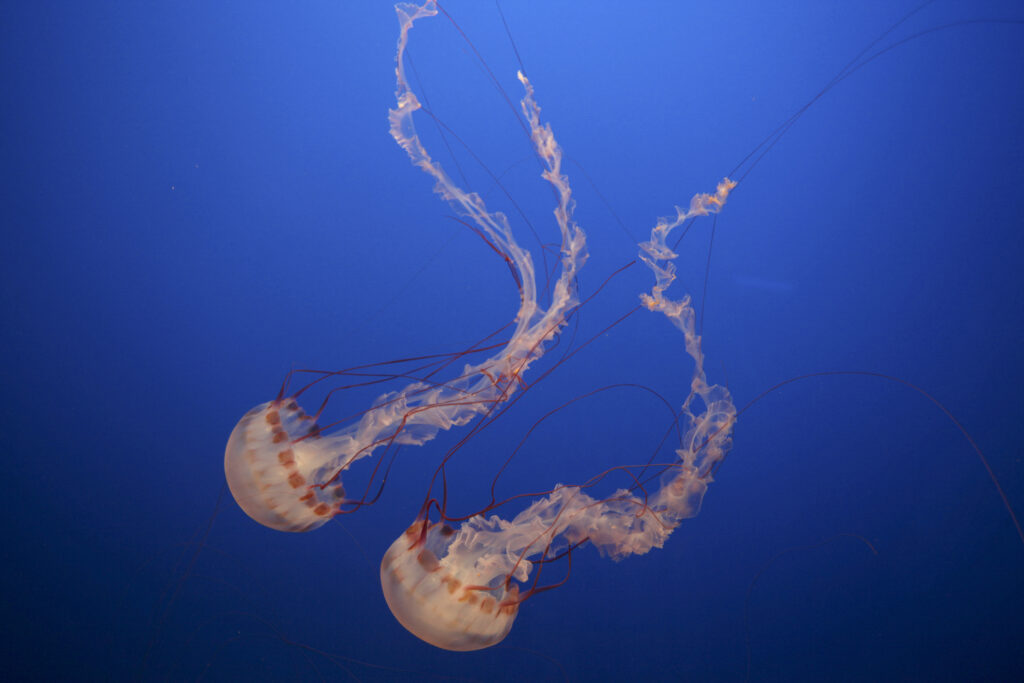
Potentially Dangerous Marine Life Encounters When Diving Australia
Australia is known for its diverse and often dangerous wildlife, both on land and in the water. When it comes to the most dangerous sea creature in Australia, there are several contenders, including sharks, crocodiles, and jellyfish. Here are a few of the most dangerous sea creatures in Australia:
- Box jellyfish: The box jellyfish is one of the most venomous creatures in the world and is found in the waters around Northern Australia. Its sting can be lethal and can cause cardiac arrest in a matter of minutes. Swimmers are advised to avoid swimming in the water during jellyfish season (October to May) and to wear protective clothing.
- Saltwater crocodile: The saltwater crocodile is the largest reptile in the world and is found in the waters around Northern Australia. They are known for their aggressive behavior and are responsible for numerous attacks on humans each year.
- Great white shark: The great white shark is one of the most feared predators in the world and is found in the waters around Australia. While attacks on humans are rare and accidental, they can be fatal.
- Blue-ringed octopus: The blue-ringed octopus is a small but deadly creature found in the waters around Southern Australia. Its venom can cause paralysis and respiratory failure, and there is no antivenom available.
- Stonefish: The stonefish is a venomous fish found in the waters around Australia. It is known for its ability to blend in with its surroundings and is responsible for numerous stings each year.
It’s important to remember that while these marine creatures can be dangerous, they should not be feared. By taking the proper precautions, such as swimming in designated areas, wearing protective clothing, and following the advice of local authorities, visitors can enjoy Australia’s waters safely and responsibly.
Get covered yourself for any unforeseen events – Purchase DiveAssure diving accident or travel coverage here.


